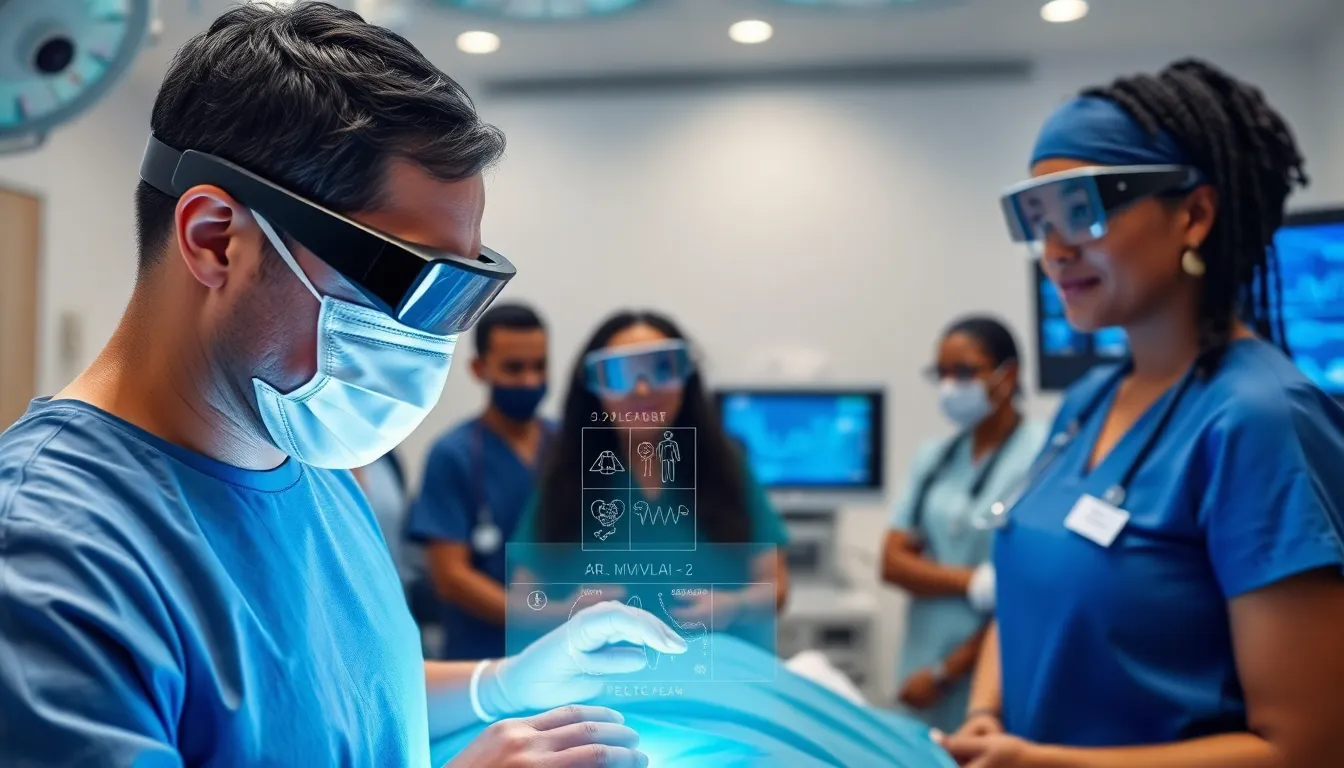Imagine a world where doctors can overlay crucial patient data right onto their bodies during surgery or where medical students can practice complex procedures without the pressure of real life, and no, this isn’t a sci-fi movie plot. Welcome to the fascinating realm of augmented reality (AR) in healthcare. It’s like having a superpower that blends digital data with the physical world. Immerse as we explore how AR is reshaping medical training, enhancing patient care, and addressing some serious challenges along the way. This article is your ticket to understanding how AR could change the future of healthcare, so secure your virtual seat.
Understanding Augmented Reality Technology

Augmented reality integrates digital information with the real world. It doesn’t just stop at overlaying graphics: this technology enhances how users interact with their environments. In simple terms, when you look through your device, AR uses sensors and algorithms to blend digital content with the physical scene in front of you. Think of it as a smart pair of glasses that can show you how to perform a surgery in real-time while you’re in the operating room.
This technology has been around for a few years, but it’s only recently found its footing in the healthcare sector. With the rise of high-resolution displays, handheld devices, and specialized software, healthcare professionals now have tools at their disposal that were once confined to the imagination.
Applications of Augmented Reality in Healthcare
The applications of augmented reality in healthcare are extensive and varied. Surgeons can now visualize anatomy beneath the skin, aiding in complex procedures and reducing risks. Some notable applications include:
Surgical Assistance
Imagine a surgeon looking at a patient and seeing a 3D model of their organs during surgery, all without moving their gaze. This is made possible through AR, which can overlay vital information directly onto the patient.
Patient Education
When patients understand their conditions better, they’re more likely to follow through with treatment plans. AR allows patients to visualize their anatomy and see what procedures will be performed, leading to improved understanding and communication.
Remote Consultations
Telemedicine isn’t just a trendy catchphrase anymore. AR can help remote consultations, allowing specialists from around the globe to guide local physicians through complex procedures via augmented overlays.
Benefits of Augmented Reality in Medical Training
Training the next generation of healthcare workers is paramount, and augmented reality plays a significant role in this evolution:
Hands-On Learning
With AR, students can practice skills on virtual patients or models. This hands-on approach ensures they aren’t just memorizing facts but are visually and practically engaging with the material.
Error Reduction
Mistakes during training can lead to serious consequences. AR allows students to rehearse scenarios repeatedly without fear of real-life repercussions, leading to a more competent workforce.
Immediate Feedback
AR can assess a student’s technique in real-time, providing immediate feedback on their performance. This way, instructors can address issues promptly, enhancing the learning curve.
Enhancing Patient Care with Augmented Reality
The potential of augmented reality to enhance patient care is immense. Here’s how:
Improved Diagnostics
With AR, doctors can visualize complex patient data more intuitively. This means better diagnosis and treatment plans, tailored to individual patient needs.
Pain Management Techniques
AR technologies can serve as distraction tools for patients, helping alleviate pain during procedures. By immersing patients in calming environments through AR, they may experience less anxiety and discomfort.
Postoperative Care
After surgery, AR can guide patients on rehabilitation exercises, ensuring they perform tasks correctly. This type of support helps in quicker recovery and reduces the need for follow-up visits.
Challenges and Limitations of Augmented Reality in Healthcare
Even though the excitement surrounding AR, there are challenges to address:
High Costs
Implementing AR technology can be expensive, which may limit its availability in smaller healthcare facilities. It’s essential to balance the benefits with the financial implications.
Training Requirements
Healthcare providers must be trained to use AR systems effectively. Without proper training, the technology’s potential may remain untapped.
Privacy Concerns
Using AR could also pose risks to patient data privacy. Handling sensitive information responsibly is critical in maintaining patient trust.
Future Trends of Augmented Reality in Healthcare
As augmented reality technology continues to evolve, its place in healthcare will only grow:
Greater Integration with AI
Imagine AR working alongside artificial intelligence for enhanced patient analytics and predictive modeling. The synergy of these technologies could redefine personalized medicine.
More Cost-Effective Solutions
As technology advances, costs are expected to drop. This will make AR tools more accessible to healthcare facilities of all sizes, potentially revolutionizing the industry.
Enhanced Remote Healthcare Solutions
The COVID-19 pandemic accelerated telehealth adoption. As AR solutions improve, expect to see more comprehensive remote care options becoming mainstream.
